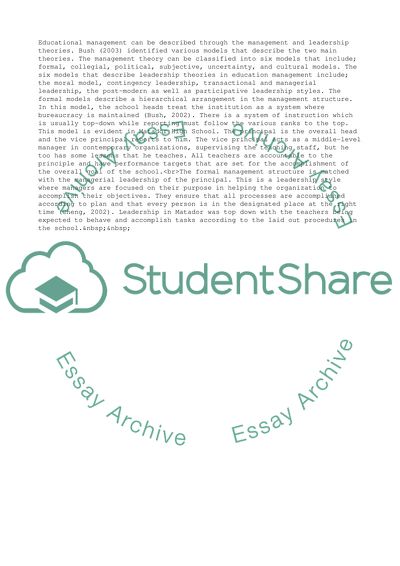Cite this document
(“Principal and Vice Principals Leadership Styles Research Paper”, n.d.)
Principal and Vice Principals Leadership Styles Research Paper. Retrieved from https://studentshare.org/management/1741257-an-examination-of-the-principal-and-vice-principals-leadership-styles-and-the-perception-of-staff-regarding-their-effectiveness-with-a-view-towards-school-development
Principal and Vice Principals Leadership Styles Research Paper. Retrieved from https://studentshare.org/management/1741257-an-examination-of-the-principal-and-vice-principals-leadership-styles-and-the-perception-of-staff-regarding-their-effectiveness-with-a-view-towards-school-development
(Principal and Vice Principals Leadership Styles Research Paper)
Principal and Vice Principals Leadership Styles Research Paper. https://studentshare.org/management/1741257-an-examination-of-the-principal-and-vice-principals-leadership-styles-and-the-perception-of-staff-regarding-their-effectiveness-with-a-view-towards-school-development.
Principal and Vice Principals Leadership Styles Research Paper. https://studentshare.org/management/1741257-an-examination-of-the-principal-and-vice-principals-leadership-styles-and-the-perception-of-staff-regarding-their-effectiveness-with-a-view-towards-school-development.
“Principal and Vice Principals Leadership Styles Research Paper”, n.d. https://studentshare.org/management/1741257-an-examination-of-the-principal-and-vice-principals-leadership-styles-and-the-perception-of-staff-regarding-their-effectiveness-with-a-view-towards-school-development.


